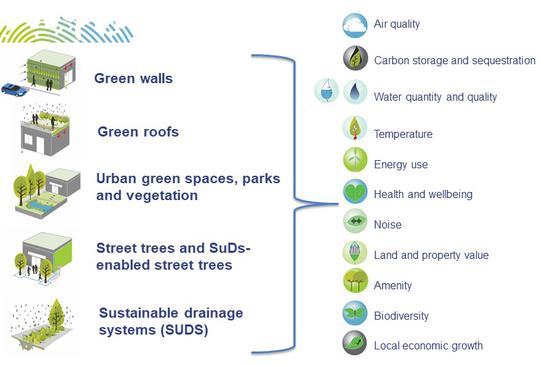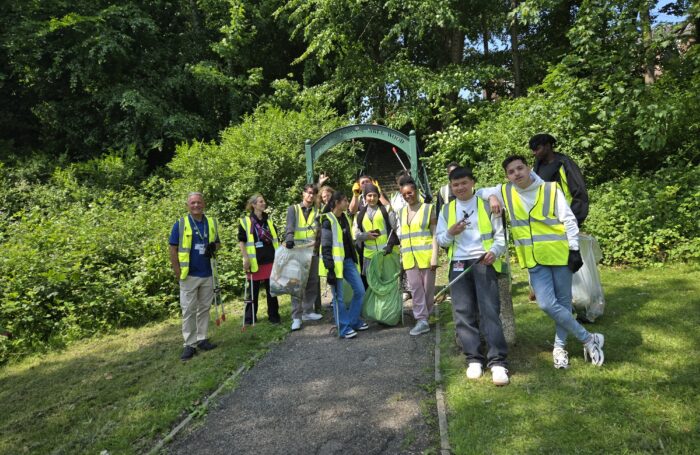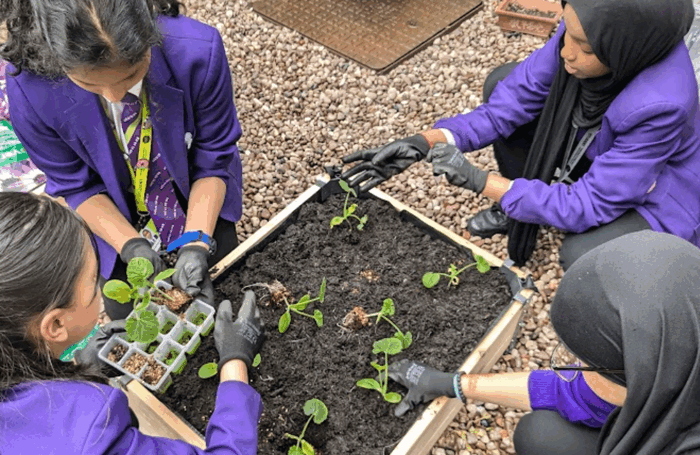Green walls can live both indoors and outdoors and can include green façades (where plants like ivy grow from the ground or roof to cover the walls) and living walls (where plants grown directly on the walls in specially made planters).
We only need to take a look at the inventor of the modern green wall Patrick Blanc’s work to understand the potential for this building adaptation. Out of all the urban nature-based solutions we have covered in this series of blogs, green walls have the greatest potential to transform how our cities look and feel. As part of the IGNITION project, the programme team has reviewed evidence that shows how green walls support us socially, economically, and environmentally – here’s what we found.

How do we know the benefits?
While more green space in urban areas is widely perceived as beneficial, the IGNITION project wants to drill down into the detail of who these benefits effect and how and why they’re so powerful. As part of the project, research was undertaken by project partners GMCA and BITC to review available evidence on the benefits of nature-based solutions. These solutions included green roofs, green walls, street trees, sustainable drainage systems, urban parks and green spaces. Over six months, the project reviewed:
- 1000+ evidence items
- five urban nature-based solutions
- 12 benefits across social, environmental, and financial areas, such as health and local economic growth
This evidence base, available to download alongside supporting resources here, will remain a live repository of information, updated with new studies when they become available. Watch our ‘How to use the evidence base’ webinar here.
There are 192 evidence items within the evidence base for green walls.

What did we find?
Green walls can help us to mitigate climate change by:
- reducing energy consumption within a building (through added insulation) by up to 15%
- soaking up 0.68kg of carbon per m2 annually (the equivalent weight of 6 bananas per m2 annually)
Green walls can help us adapt to the effects of climate change by:
- soaking up to 75% of rainfall, that would usually run off the walls
- reducing the air temperature around them by up to 4°C
Green walls can help restore our natural environment by:
- improving air quality by absorbing up to 50% of particulate matter and 35% of nitrogen dioxide in built-up streets where pollution sits (street canyons)
- providing a home, refuge and food for birds and insects that would not otherwise exist
- reducing noise levels by around 50%
Green walls can support our health and well-being by:
- reducing noise levels by around 50%
- improving memory recall by 12-15% when we can view vegetation
- enhancing physiological and psychological relaxation compared to a normal wall
- improving the selective attention of children in classrooms with green walls
Green walls can provide financial incentives for developers, owners, occupants, and businesses by:
- increasing property and land price by 2-2.5%
- increasing worker productivity with green office environments by 15%
- reducing rates of sick leave for employees with view of nature by 10%
As a fairly new contender to the nature-based solutions repertoire we are only just beginning to understand and invest in these systems. Across Greater Manchester we already have a few examples of green wall installations. This year the largest living wall in the north of England was installed on the Mailbox building in Stockport, made up of 14 different living walls and 114,240 plants. The Deansgate Metrolink green wall has now been established for five years and is still blooming. The IGNITION project nature-based solutions Living Lab at the University of Salford will also host interconnecting nature-based solutions and green walls, whilst monitoring and researching their performance and will be ready for Spring 2021.
We’re well aware that our cities could do more to promote positive well-being, so it is time to think outside the box and get greening!




